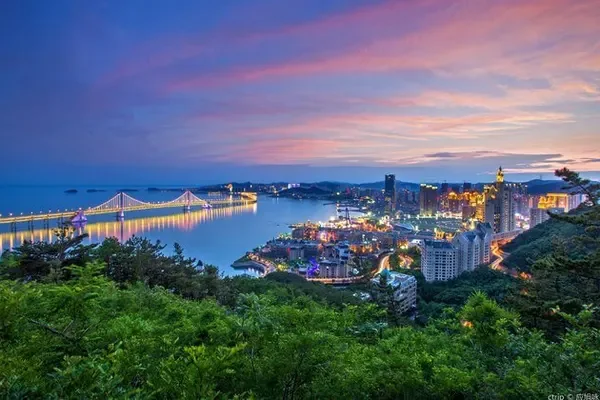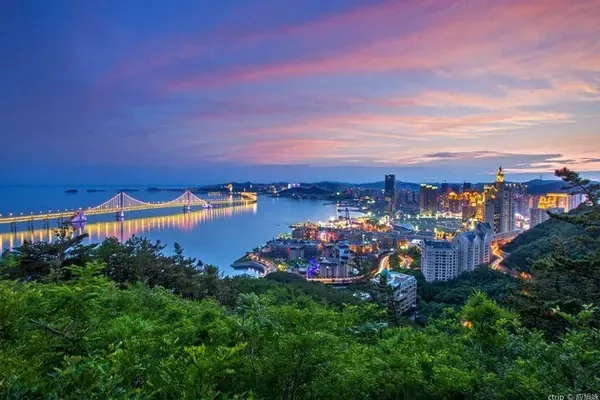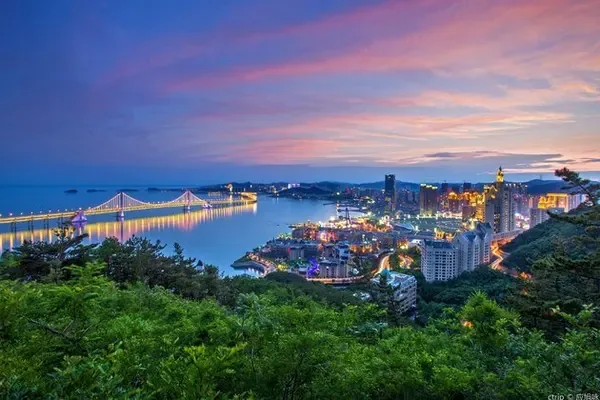That poem, that road, that water, oh——Qinghai-Tibet Plateau,
When our station wagon turned south from the Qilian Mountains to Dachaidan, we entered the Qinghai-Tibet Plateau, as if a clear voice lingered in the sky:
Oh I see mountains, mountains and rivers
connected by mountains and rivers
Yalasuo, that is the Qinghai-Tibet Plateau

I have always been afraid of coming to the Qinghai-Tibet Plateau, afraid of altitude sickness, afraid of bumpy roads, and afraid of being unable to move forward due to bad weather. Known as the "roof of the world", it is the highest and largest plateau in the world. It is about 2,800 kilometers long from east to west, 300-1,500 kilometers wide from north to south, and has a total area of about 2.5 million square kilometers. It can be divided into northern Tibet plateau 6 parts including Tibet, South Tibet Valley, Qaidam Basin, Qilian Mountains, Qinghai Plateau and Sichuan-Tibet Alpine Valley, including all of Tibet, Qinghai, Xinjiang, Gansu, Sichuan and Yunnan, as well as Bhutan, Nepal, India, Part or all of Pakistan, Afghanistan, Tajikistan, Kyrgyzstan. The altitude ranges from 3000 meters to 8000 meters.

We traveled 1,500 kilometers along the Qinghai-Tibet Highway to Xining, but we hardly saw anyone, and even cars coming from the opposite side were rare. Our car always travels between the permafrost and the Gobi, with Qilian Mountains on the left and Kunlun Mountains on the right. A black belt leads us to climb to the top of the mountain for a while, and rush down to the bottom of the valley for a while. Sometimes the wind and sand are blowing and we can't see anything, but most of the time, the sky is quiet, no wind or cloud.









It stands to reason that when we went, it should be snowing heavily, but fortunately, it was sunny all the way. We will run seven or eight hours a day, and we rarely see service areas along the way. It's strange that there are 28 people in the car, and no one shouted to go to the toilet. Is it because the air here is too dry, absorbing the moisture from our bodies? On the contrary, the driver occasionally asked us to come down and relax, and said that if we wanted to defecate, we should find a place for ourselves. When the whole car got down, the men and women separated naturally, and they found a hillock and settled it like that. Once or twice, we entered the public service area, but the doors of the toilets were locked. There was no staff this season, and it was said that they would not go to work until after April 8. There is no vegetation here, let alone a green plant. You must know that the peach blossoms, plums, white willows and willows in the south of the Yangtze River are turning yellow! There is no spring on the Qinghai-Tibet Plateau, and heavy snow can still fall in May and June.







I was afraid, but nothing happened. We easily ran on the flat Qinghai-Tibet Highway, which was more comfortable than our roads in the interior. I have to admire the engineering quality of this road.

It's simply a natural moat turned into a thoroughfare!


At this time, the tour guide told us the story of this road. The current Qinghai-Tibet Highway refers to the national secondary highway from Xining to Lhasa, with a total length of 1937 kilometers. It was reconstructed on the basis of the original Qinghai-Tibet Highway (the highway from Golmud to Lhasa, with a total length of 1,200 kilometers). Before the Qinghai-Tibet Highway was built, it usually took more than half a year to get there safely from Lhasa to Xining by animal power and on foot. After the peaceful liberation of Tibet in 1951, the material supplies of the garrison and the Tibetan people became the key to the consolidation of the regime. General Mu Shengzhong, the political commissar of the Tibet Transport Corps at the time, had two difficult experiences of entering Tibet, and he had a bold idea. : Construction of the Qinghai-Tibet Highway. At that time, the central government allocated 300,000 yuan for road construction, and dispatched an engineer, 10 engineers, 10 ten-wheel trucks, 1,200 shovels, 1,200 pickaxes, and 150 kilograms of explosives. The section from Golmud City to Lhasa City crosses Kunlun Mountains (4,600 meters above sea level), Fenghuoshan Mountain (5,010 meters above sea level), Tanggula Mountain (5,320 meters above sea level), Touerjiu Mountain (5,180 meters above sea level), crosses Chumar River, Hong Liang River, Qushui River, Xiushui River, Beilu River, Yamal River, Tongtian River and other rivers have a total length of 1,161 kilometers, the entire section is above 4,000 meters above sea level, and the annual average temperature is below -6C0. On May 11, 1954, Mu Shengzhong led 19 cadres and more than 1,200 migrant workers, divided them into 6 sections and started the difficult road construction process. It took 7 months and 4 days to cut off 25 snow-capped mountains across the road. Built the highest road in the world.



There was no so-called Golmud City at that time. General Mu Shengzhong said: "Wherever my tent is pitched, there is Golmud. We will not leave. We will be the first generation of Golmud. We like cities, and we prefer to build them ourselves. We want to build a garden-like city here, and we want to open a flat road on the Qinghai-Tibet Plateau leading to Tibet, connecting Gansu and Xinjiang in the north."
Is it like a poem?

Speaking of poetry, the love song of the Sixth Dalai Lama Tsangyang Gyatso (1683.03.01-1706.11.15) is romantic and spiritual:
Live in the Potala Palace,
I am the biggest king in this snowy area.
Wandering on the streets of Lhasa,
I am the most beautiful lover in the world.

Another song:
see you or see me
I'm right there, neither sad nor happy
you miss me or not
Love is right there, never coming or going
do you love me or not
love is there
with you or not with me
My hand is in yours, never give up
come into my arms
or
let me live in your heart
sadly in love
Silent joy

Haizi (1964.3.24-1989.3.26), a contemporary poet with the same divinity as Cangyang Gyatso, has entered the Qinghai-Tibet Plateau twice. That day, when we entered Delingha, the tour guide read his poem as:
Sister, I am in Delingha tonight
Gobi is empty
dim night
Sister, I am in Delingha tonight
I don't care about humans, I just want you
The original poem is as follows:
Sister, tonight I am in Delingha, the night is shrouded
Sister, I only have Gobi tonight
At the end of the grassland, my hands are empty
Can't hold a single teardrop in grief
Sister, tonight I am in Delingha
This is a desolate city in the rain
except those who pass and live
Delingha...tonight
This is the only, last, lyrical
This is the only, the last, steppe
i give stone back stone
let victory win
Tonight the highland barley belongs only to him
everything is growing
Tonight I only have the beautiful Gobi, empty
Sister, I don't care about humans tonight, I just want you

Now Delingha has a population of 100,000. It is the seat of Haixi Mongolian and Tibetan Autonomous Prefecture in Qinghai Province. The local area engraved Haizi's poetry anthology on stone tablets and built a forest of steles. It can be seen that Delingha is really a romantic place, and it holds a June song meeting every year. The main attractions are Huaitou Tala Rock Paintings, Tuosu Lake, Aliteng Delingha Temple, etc. We entered Delingha in the evening and only walked along the Bayin River.



Before entering Delingha, the clock was around seven o'clock, and it was when the sun was setting here that our car turned into the Emerald Lake, which had not been fully developed. It is the ruins of the mining area of the former Dachaidan Chemical Plant, and the pits left behind are like emeralds inlaid on the ground due to the action of minerals.












If you use water to describe the Qinghai-Tibet Plateau, you will not agree to it. In our concept, apart from the continuous glaciers, the Qinghai-Tibet Plateau is obviously full of Gobi beach saline-alkali land and permafrost, 80% of which is arid saline-alkali land. Where does the water come from? But all our check-in attractions are all related to water. In fact, there must be great water in every mountain. The Yellow River, Yangtze River, Lancang River, Yarlung Zangbo River, Nujiang River, Indus River, and Ganges River all originate there. 280 million years ago (early Permian in the geological age), the present Qinghai-Tibet Plateau was a vast and choppy ocean. This sea area traverses the southern part of the current Eurasian continent and communicates with the sea areas of North Africa, Southern Europe, West Asia and Southeast Asia. It is called the "Tethys Sea" or "Ancient Mediterranean Sea". It was squeezed by three major plates 240 million years ago The uplift has formed the current plateau wetland landform, with more than 1,600 lakes dotted around, accounting for nearly half of the total number of lakes in China. In fact, glaciers are also called solid wetlands. The Himalayas straddle the southern edge of the Qinghai-Tibet Plateau, with more than 100 peaks over 7,000 meters and 13 snow peaks over 8,000 meters, making it worthy of the title of the highest mountain range in the world. Huge mountain ranges such as the Qinghai-Tibet Plateau, the Karakorum Mountains, and the Gangdise Mountains form the skeleton of the Qinghai-Tibet Plateau, while the braided rivers and dotted lakes form the blood of the plateau.
The beautiful Qinghai-Tibet Plateau! This admiration may come from its mountains and rivers, right?


Our round trip of Gansu and Qinghai this time only went through the Qinghai part of the Qinghai-Tibet Plateau, and the Qinghai part only passed through the Qilian Mountains and Kunlun Mountains, from Haixi to Hailan, and then to Xining, around Qaida Wood basin walked around. Checked in 4 lakes:


Wusute Water Yadan is the Dachaidan Water Yadan Geological Park, located in the north-central Qaidam Basin, at the junction of the three administrative regions of Lenghu, Golmud, and Dachaidan. This is our second scenic spot on the Qinghai-Tibet Plateau. At this time, Wusute is still frozen, and various reefs, islands, mud and rocks are scattered on the white ice, making you feel that you have strayed into the stars, majestic and lonely, abrupt and magical.



















On the day before entering Xining, we visited Chaka Salt Lake and Qinghai Lake. Qinghai Lake, also known as "Cuowenbu", which means "green sea" in Tibetan, is located in the Qinghai Lake Basin in the northwest of Qinghai Province. It is not only the largest inland lake in China, but also the largest saltwater lake in China. It was formed by the collapse of faults between Datong Mountain, Riyue Mountain and Qinghai Nanshan in the Qilian Mountains.




I said I came to see the wonders on the water, but it turned out to be the world on ice, and Qinghai Lake has not opened for a long time. On the third day when I returned home, I heard that it had a civil and military opening. People call the melting of ice and snow Wenkai, and the bursting of ice is called Wukai. I saw the scene of civil and martial arts that day in the video: the ice in the middle of the lake was Wenkai, and the ice on the edge of the lake was too late to digest, and was pushed to the shore by gusts of wind and waves. This phenomenon is a rare spectacle, but Qinghai Lake, which is covered with ice and snow, has another scene - a bird's paradise.





















Chaka Salt Lake is always a mirror-like water surface, perhaps because the salinity is too high to freeze, right? People call it: the mirror of the sky. "Chaka" is Tibetan, which means salt pond, with a total area of 105 square kilometers. It is located in the east of the Qaidam Basin and separated from Qinghai Lake in the north. It is one of the four major salt lakes in the Qaidam Basin. Chaka Salt Lake is famous for its rich "Daqing Salt". Its salt grains are large and pure, and the salt taste is mellow, which is an ideal edible salt. It is both a mining area and a tourist destination. People used salt to pave roads and pile up various sculptures with salt. There are salt ponds with screens, and there are also salt ponds open to tourists: the shallow water surface and the thick salt layer below are like mercury-plated mirrors, reflecting the sky. A kind of POSE, using the mobile phone camera to take pictures of their reflections in the water. Chaka Salt Lake is as famous as Kumbum Monastery, Qinghai Lake, and Mengda Tianchi. It is one of the "Four Scenic Spots in Qinghai", and was rated as one of the "55 places that people must visit in their lifetime" by the National Tourism Geographic Magazine.



















Walking through Qinghai on the Qinghai-Tibet Plateau is only a short 4 days, and there is always something unsatisfactory. Let me end with "In That Faraway Place" by "King of Western Songs" Wang Luobin:
In that distant place
there is a nice girl
people walk past her tent
have to turn back and look nostalgic
...
I would like to wander in the grassland and herd sheep with her
...
I would like to be a lamb and follow her
I wish she would lightly beat me with a whip every day

2019-5-19 in Guangzhou


